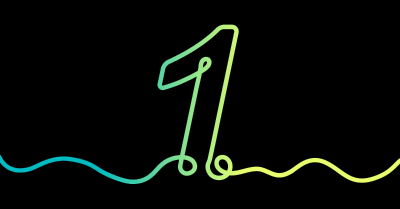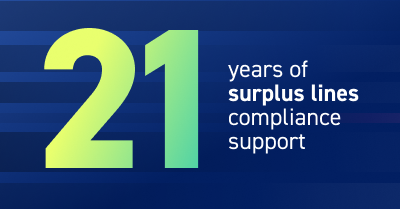Chris Watkins leads ReSource Pro’s Global Technology division, including information security, infrastructure, enterprise applications, and innovation, overseeing a team of over 120 technology professionals.
What is blockchain?
The purpose of blockchain technology is to create a system of storing data that is difficult to tamper with and is not controlled by any one person or organization. In layman’s terms, a blockchain is like a database, but blockchains have the potential to be more trustworthy and reliable because:
- Every participant in the blockchain receives their own copy of the data.
- The data is not owned or controlled by any one participant in the blockchain.
- Data added to the blockchain is difficult to change.
It’s essentially just a different database
Databases typically come in three forms, but most we engage with are centralized. This means all the information in the database is stored in one system, such as a server, which you can access using another system, like your laptop.
Blockchains, on the other hand, are decentralized and distributed, meaning that every system that interacts with the database, whether a laptop, phone, or tablet, receives its own copy of the data. Now, even if all other systems in the chain fail or are shut down, the others can still access the data.
Blockchains also store data differently. As the name suggests, data is contained in blocks, which together create a chain. Due to a security measure called hashing, any block added to the chain becomes extremely difficult to modify or delete. Because of this, new blocks are always added chronologically, which makes the flow of information easy to follow and allows participants to compare current and past data.
Errors and irregular data face extra scrutiny
Whenever a system attempts to add new data to the blockchain, it must first be validated by the majority of systems in the network using a consensus mechanism. All participants are required to go through the same validation procedure as everyone else, and if any system attempts to add data that does not conform with the rules or standards of the blockchain, the others are able to recognize it as such and ignore it.
To sum up, blockchain’s key strengths are accessibility and security. Distribution of the blockchain means that no one person or organization can shut down access to the data, as is possible with a centralized network. Consensus mechanisms, hashing, and chronological blocks all make it difficult to change the data in any way that would harm the network of users.
Use case: Healthcare
If you are still unsure how blockchain works or what its benefits are, it may be helpful to consider a popular use case: electronic health records.
Every time you visit a new doctor, you are required to provide an overview of your medical history, such as any allergies, medications, or underlying conditions you may have. Even though this information is likely already in the possession of another healthcare provider, it is often inaccessible to others outside the organization. In some cases, this is for privacy or security purposes. In others, the data may simply be incompatible with the databases of another provider.
That’s where blockchain comes in. Thanks to the technology’s high level of security, we could do away with isolated data by establishing a universal blockchain, accessible by most, if not all, healthcare providers across the nation. Under such a system, a visit to the doctor might simply require you to provide a sort of ID that enables healthcare providers to access your information in the blockchain.
While blockchain integration on this scale isn’t likely to be achieved any time soon—and we’ll discuss why—the technology has the potential to streamline our interactions with data across a wide variety of industries, including insurance.
How can blockchain be used in insurance?
Blockchain can be used in the insurance industry any time data needs to be available to or updated by multiple parties on demand. Let’s look at some examples how blockchain could improve insurance operations:
- Certificates of Insurance. Because certificates need to be distributed to multiple stakeholders quickly and efficiently, they are an ideal use case for blockchain. Rather than mailing physical copies to a worksite leader, bank, insured, or carrier, as is commonly done today, each could be granted access to the block containing the certificate.
- Accounting. Due to its chronological structure, blockchain is ideal for tracking transactional information, as participants can follow the chain to understand the flow of funds. This could be especially useful for tracking direct billing and agency commissions. If an agency suspects they are not receiving the commissions they deserve, for instance, they could simply view the blockchain to determine how much premium the carrier received and compare it with the commission.
- Health Insurance. As mentioned earlier, healthcare providers, insurers, and insureds stand to become some of the biggest beneficiaries of blockchain technology. In addition to making health information easier to track, smart contracts, which trigger an action when predefined conditions are met, could enable carriers to pay out claims and other costs automatically.
Why insurance won’t be quick to adopt blockchain
Although blockchain sounds impressive, it is unlikely the insurance industry and others will embrace it on a large scale any time soon. Here are three reasons why.
1.Lack of Standards
Although industry consortiums RiskBlock Alliance and Blockchain Insurance Industry Initiative (B3i) joined an ACORD project to establish standards for blockchain in insurance in 2018, as of yet, none are firmly established. Without clear guidance and rules for implementation, blockchain will struggle to be accepted throughout the industry.
2.Competition
When it comes to data, companies often prefer full ownership. For blockchain to succeed, we will need to leave this attitude at the door. To illustrate why, let’s imagine there are two different hospital networks, A and B, each with their own patient data blockchain. A patient normally visits facilities within network A, but becomes injured while out of state, necessitating a visit to network B. Now, potentially vital data is stuck within network A’s blockchain, which isn’t compatible with network B’s. In other words, we arrive a similar problem to what already exists with today’s centralized databases, where information frequently becomes trapped within individual organizations.
3.Urgency
Perhaps the greatest hurdle to blockchain adoption is that many companies simply aren’t sure whether they need it. According to a Deloitte survey this year, 55% of business leaders consider blockchain to be a top priority for their organization, yet 54% of respondents also believe the technology is overhyped. Indeed, blockchain won’t be applicable everywhere, and even in the event it becomes widespread, it won’t replace legacy databases entirely.
This technology has great potential for adding security and accessibility to insurance data management, so keep an eye out in the next 3-5 years.
See more from our Insurtech 101 series:
- Insurtech 101: Robotic Process Automation in Insurance
- Insurtech 101: Artificial Intelligence and Machine Learning for Insurance
- Insurtech 101: Pros and Cons of In-House and Off-the-Shelf OCR
Looking to integrate the most impactful insurtech tools into your organization? ReSource Pro has successfully incorporated automation, machine learning, and more into insurance operations for hundreds of clients. Let’s talk.




